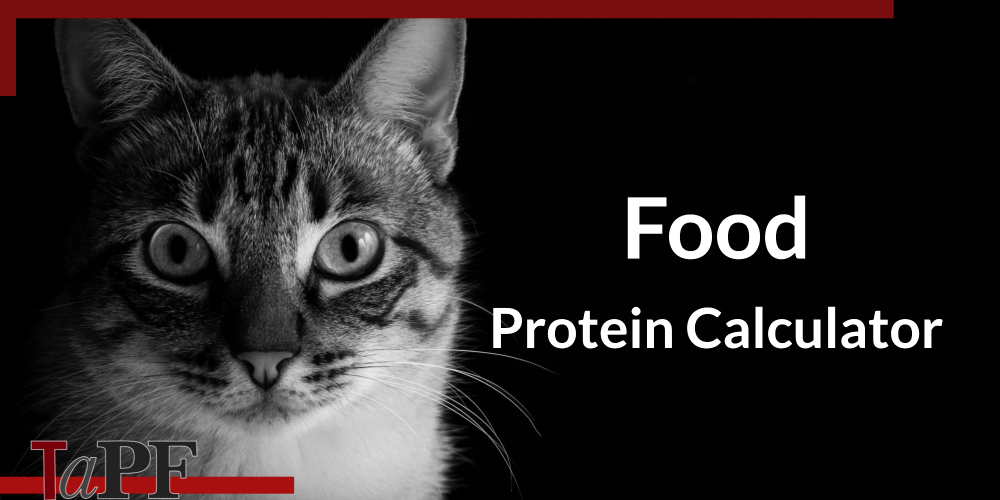Pet food formulator Steve Brown provides pet owners with this easy method to know exactly how much pet food to provide to meet minimum protein requirements.
What if you are not/cannot feed the recommended amount to meet minimum protein requirements?
In many instances, a pet would gain weight if you fed the recommended amount of pet food needed to meet the minimum protein requirements. If you are feeding less food (less kcals than the result above), Steve Brown offers us these suggestions to meet the minimum protein requirements:
- Switch to a pet food with a higher protein percentage. Such as – using a dry food as the example – if your current pet food is 30% Protein (listed in the Guaranteed Analysis) – switch to a pet food that is 35% Protein.
- Or, increase the protein your pet is receiving each day by adding fresh meat to your pet’s diet. For every gram of protein needed, you can add 5 grams of raw lean beef or raw chicken (roughly a heaping teaspoon) – or 4 grams of cooked beef or chicken to your pet’s daily diet (roughly a heaping teaspoon).
To calculate how many grams of meat to add to your pet’s diet daily:

Grams of protein needed per day (from the chart above) divided by the number of kcals needed of this pet food (the end result from above), times the amount of kcals you are currently feeding = the grams of protein you are currently feeding.
Such as, if you are currently feeding 15 grams of protein and your cat needs 17.1 grams – add roughly two heaping teaspoons of raw or cooked lean meat daily to their food (one heaping teaspoon per gram deficient).



























KA Stellings
January 31, 2024 at 1:27 pm
Thx so much.
How would you calculate protein for poached chicken with bone broth for a cat. It is not the only source for food. Using freeze dried food – which your formula works great on
T Allen
January 31, 2024 at 7:51 pm
You can find the nutritional data for many food items at http://www.myfooddata.com. Search for the food, choose the serving size and it’ll show you the grams of protein in that serving. You need to be specific as to the type of meat because there is a difference between lean chicken breast and chicken thigh, as an example.
Diane H
February 2, 2024 at 3:31 am
The calculator results are contradicting… when I calculate based on kcal/kg, she needs 1/3 can a day, but when I calculate based on kcal per pound, she needs 1/8 can a day. This is using a large 12.5 oz can of cat food… 1/3 seems too much for a 7 lb. cat, and 1/8 seems too little. The label recommends 1/2 of the entire can for a 6-8 lb. adult cat. At that rate, she’ll be 10 lbs in no time! —and she’d never eat that much in a day anyway. How do I figure this out to insure she is getting proper nutrition and protein?
Susan Thixton
February 2, 2024 at 10:47 am
Make sure you are using ‘as fed’ protein percentage (not on a ‘dry matter’ basis). That could be the difference in your results.
Marcela Garcia
February 5, 2024 at 8:10 pm
Thank you for sharing your knowledge with so many. I am trying to understand but when I read the guaranteed analysis is in kilocalories per ounce and crude protein is in in % and in dry matter basis. Also, how do I calculate it for a kitten?
Susan Thixton
February 6, 2024 at 8:33 am
The calculator is only for adult cats (and adult dogs). Sorry.